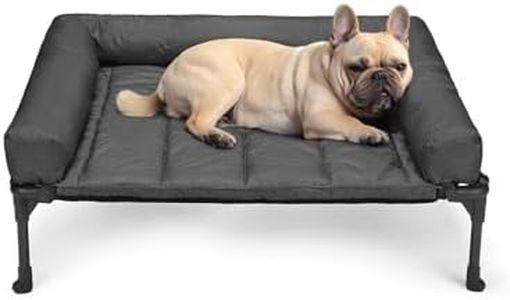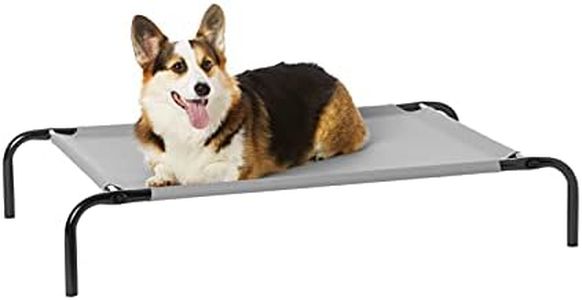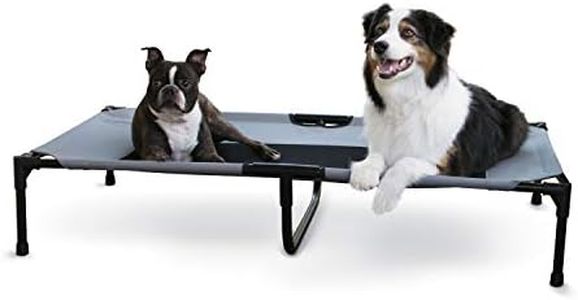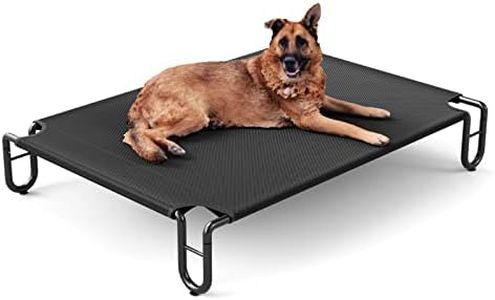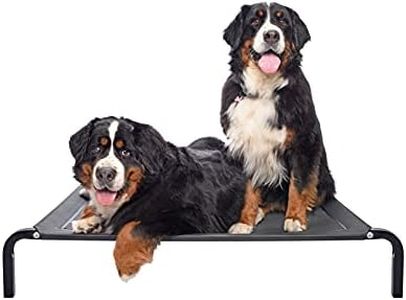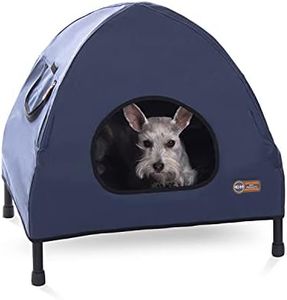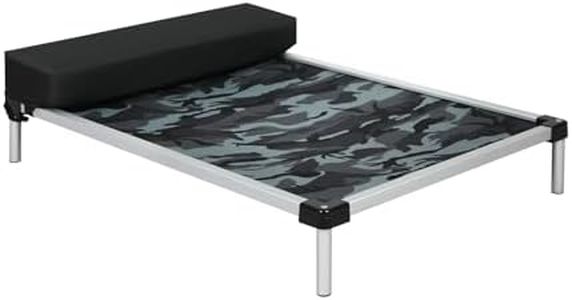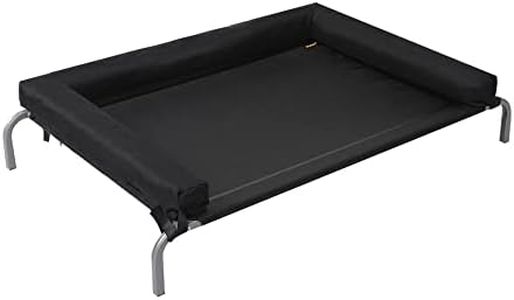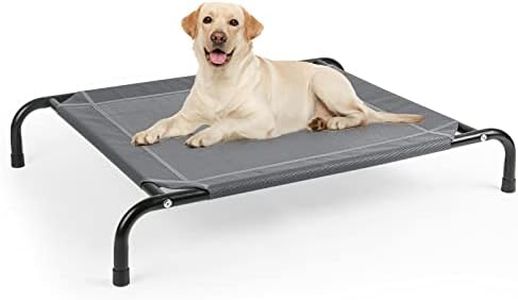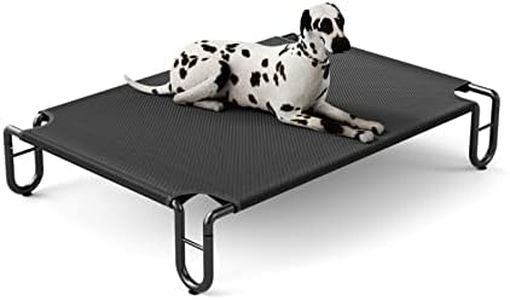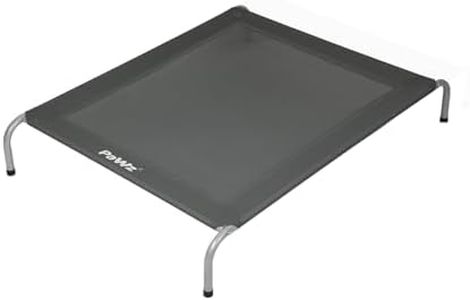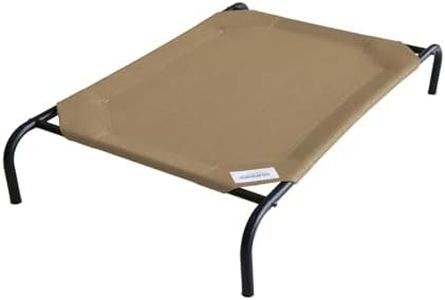We Use CookiesWe use cookies to enhance the security, performance,
functionality and for analytical and promotional activities. By continuing to browse this site you
are agreeing to our privacy policy
10 Best Elevated Dog Beds
From leading brands and best sellers available on the web.Buying Guide for the Best Elevated Dog Beds
Choosing an elevated dog bed is about ensuring comfort, support, and cleanliness for your pet. Elevated beds lift your dog off the ground, helping with airflow, reducing exposure to dirt or damp surfaces, and adding joint relief, especially for older dogs. When shopping for an elevated dog bed, it’s important to look at the size, height, material, ease of cleaning, and weight capacity so you get the best fit for your pet’s needs and environment.Size (Length and Width)Size refers to the surface area of the bed and determines how much space your dog will have to stretch out and relax. It's important because a bed that's too small will be uncomfortable, while an overly large one may not provide a secure feeling. Beds typically come in small, medium, large, or extra-large categories. Think about your dog's breed, current size, and whether they like to sprawl or curl up. Measure your dog from nose to tail and add a few inches to find the right fit.
Height (Elevation from Ground)Height means how far the sleeping surface sits above the ground and is key for airflow and comfort. Low elevations (around 4-6 inches) are easy for small or older dogs to get on and off, while higher models (8 inches or more) provide increased air circulation but may be tougher for tiny breeds or dogs with limited mobility. The best choice matches your dog's size and physical ability—go lower for puppies, seniors, or short-legged breeds, and higher for healthy, agile dogs or hot climates.
Frame MaterialFrame material affects stability, durability, and weight. Common frames include metal (like steel or aluminum), plastic, or wood. Metal provides strong support and is more weather-resistant, making it good for active or heavier dogs, and for outdoor use. Plastic is lightweight and rust-proof, but can be less sturdy for large breeds. Wood is sturdy but often heavier and suited more to indoor environments. Choose based on your dog's energy, weight, and whether you'll use the bed inside or outside.
Sleeping Surface MaterialThis is the woven fabric or mesh where your dog actually sleeps. It determines firmness, breathability, and ease of cleaning. Mesh fabrics allow for better airflow and dry quickly, making them ideal for warmer climates and outdoor use. Heavy-duty canvas is more durable and supportive but may trap more heat. Consider your dog's comfort preferences, climate, and how much shedding or mess you're dealing with. If allergies or odor are concerns, prioritize breathable, easy-to-wash materials.
Weight CapacityWeight capacity is the maximum weight the bed can safely support. It's crucial for durability and safety, as an overloaded bed may collapse or wear out quickly. Beds are rated for different dog sizes: small (<50 lbs), medium (51-80 lbs), and large/extra-large (81+ lbs). Always choose a bed with a capacity above your dog’s actual weight and account for any growth if you have a puppy.
Ease of CleaningThis factor describes how simple it is to keep the bed clean and free of dirt, hair, and odors. Some beds have removable, machine-washable covers, while others can be hosed off or wiped down. If your dog sheds a lot, has allergies, or often gets dirty, prioritize beds with easy care instructions and quick-drying materials. Consider how frequently you're willing or able to clean the bed when making your choice.
Portability/AssemblyPortability and assembly refer to how easy the bed is to move or set up. Beds that disassemble easily or fold flat are best if you travel, camp, or want to store the bed away. Look for simple assembly with minimal tools if you aren’t handy or will be moving the bed often. Think about where you’ll use it and how often you may want to reassemble or relocate it.

